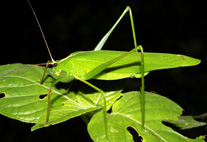Abstract
Late Jurassic–Early Cretaceous (Late Volgian–latest Ryazanian) rhynchonellate brachiopods are described from eight out of 15 hydrocarbon seep deposits in the Slottsmøya Member of the Agardhfjellet Formation in the Janusfjellet to Knorringfjellet area, central Spitsbergen, Svalbard. The fauna comprises rhynchonellides, terebratulides (terebratuloids and loboidothyridoids) and a terebratellidine. The rhynchonellides include: Pseudomonticlarella varia Smirnova; Ptilorhynchia mclachlani sp. nov.; and Ptilorhynchia obscuricostata Dagys. The terebratulides belong to the terebratuloids: Cyrtothyris? sp.; Cyrtothyris aff. cyrta (Walker); Praelongithyris? aff. borealis Owen; and the loboidothyridoids: Rouillieria cf. michalkowii (Fahrenkohl); Rouillieria aff. ovoides (Sowerby); Rouillieria aff. rasile Smirnova; Uralella? cf. janimaniensis Makridin; Uralella? sp.; Pinaxiothyris campestris? Dagys; Placothyris kegeli? Harper et al.; and Seductorithyris septemtrionalis gen. et sp. nov. The terebratellidine Zittelina? sp. is also present. Age determinations for all but one of the brachiopod-bearing seeps are based on associated ammonites. Five of the seep carbonates have yielded Lingularia similis?, and it is the only brachiopod species recorded from two of the seeps. Other benthic invertebrate taxa occurring in the seeps include bivalves, gastropods, echinoderms, sponges, and serpulid and non-serpulid worm tubes. The brachiopod fauna has a strong Boreal palaeobiogeographic signature. Collectively, the Spitsbergen seep rhynchonellate brachiopods exhibit high species richness and low abundance (<100 specimens from 8 seeps). This contrasts markedly with other Palaeozoic–--Mesozoic brachiopod-dominated seep limestones where brachiopods are of low diversity (typically monospecific) with a super-abundance of individuals. The shallow water environmental setting for the Spitsbergen seeps supported a diverse shelf fauna, compared to enigmatic Palaeozoic–Mesozoic brachiopod-dominated seeps.

